
As we rounded a corner and accelerated down the short straight, Steve’s voice crackled over the headphones: “There’s 500hp under the bonnet but the trick is to use it only when you need to…”
This feature was originally published in 4x4 Australia’s April 2009 issue
The noise of the motor was growling in response to Steve’s insistent right foot, the cacophony of engine and gearbox noise was still loud over the muffling effect of the headphones I was wearing.
 Sweat was trickling down my face, down the middle of my back and I felt like I was sitting in a pool of it, the tight racing seats clamping me into my own personal plunge pool. I could feel the heat radiating up from the engine firewall; there was no airconditioning, the side windows were sealed up for safety compliance and there were no air scoops in the new roof panel that had just been fitted.
Sweat was trickling down my face, down the middle of my back and I felt like I was sitting in a pool of it, the tight racing seats clamping me into my own personal plunge pool. I could feel the heat radiating up from the engine firewall; there was no airconditioning, the side windows were sealed up for safety compliance and there were no air scoops in the new roof panel that had just been fitted.
Being in the middle of Victoria’s hottest heatwave in 100 years didn’t help one iota and, all-in-all, it wasn’t the greatest time to be blasting around the bush… but what the hell… it beats a real job!
Steve flicked the long thin lever of the sequential Holinger six-speed gearbox, the engine note reaching a crescendo as the gearbox stepped down a cog. The big four-piston AP Racing calipers clamped pads to discs as we rammed into the corner, then we were away again, accelerating quickly up through the gears.
“It’s a pretty tight box. First is higher than a normal Pajero first gear, sixth is 1:1; there’s no overdrive and she howls a bit when you have her flat out at over 200km/h,” Steve commented in an under-stated, off-hand way as we slowed for a water channelling whooptee-do.

The suspension of the SWB Mitsubishi stretched to its maximum but only rarely was their any air under the wheels. Steve was taking it easy. “Had it out here testing the suspension before the Safari last year and the suspension expert put it on its roof!”
Steve had just got the Pajero back from a lengthy stay at the panel beaters after he had collected a tree during the Safari. Luckily, dented panels were the only problem from that minor mishap.
But I knew I was in good hands. Steve Riley, a dairy farmer in East Gippsland, started racing in the Australian Safari riding a Honda XR600 on which he completed 12 or 13 safaris. In 2001 he changed to a Pajero and before the 2008 event decided he needed something a touch more competitive if he was ever to get onto the winner’s dais. Hence the 2006 model SWB Pajero.
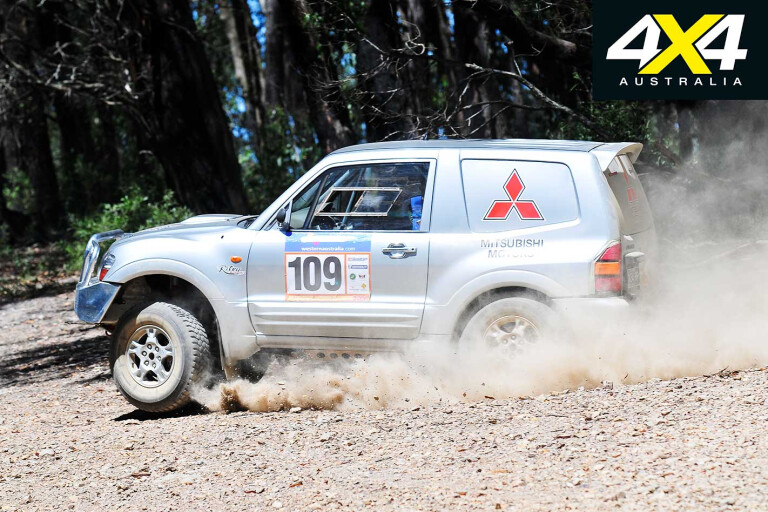
The modification from standard Pajero to successful race car was a long and tedious one, as they always are, and there is still plenty that Steve would like to do. His two friends and part-time helpers in the workshop and in the support truck, Chris Stone and Troy McAinch, know the vehicle intimately.
First up, the Mitsubishi V6 engine was replaced with a blue-printed, 6.0-litre GM V8 motor. The V8 features a hot cam, heavy-duty valves and custom extractors. To shoe-horn the bigger, longer motor into the engine bay, the firewall had to be shifted back six inches.

Surprisingly, the standard EFI and ECU on the engine have been retained but this will be replaced by the next Safari with a more easily programmable MOTEC unit. A custom built, large capacity radiator has also been fitted while twin AU Falcon fans help feed cool air to the unit.
Once the Holinger gearbox was fitted and mated to the standard Pajero transfer box, the rear tailshaft was very short! Differentials remain standard Mitsubishi fare and have proved very strong. Protecting all the under-works from front to back are large sheets of alloy plate.
The suspension has undergone a huge transformation with new strut towers up front that are braced together and are also tied into the substantial roll cage to make the whole set-up as strong as possible. These allow longer King shocks and springs (not to be confused with King Springs out of Queensland), offering much more wheel travel.

There are twin shocks on each corner while large remote reservoirs help keep the oil cool, and the shocks working, no matter the speed or the track. Hydraulic bump stops also feature at each corner.
Wheel track has been increased by 44mm; each wheel sporting a 22mm spacer. “You chase every bit of track width with a SWB, just to increase stability”, Steve explains. Alloy wheels are shod with somewhat bland looking but super tough BFGoodrich 235/85R16 Dakar special tyres.
Two fuel tanks feed the engine: a chassis-rail mounted 70-litre tank and a 170-litre tank mounted behind the driver in the separated cargo area of the Pajero. The fuel system is designed to be as simple as possible, to the stage that there is only a dip stick on the main tank, which is rarely full as the high centre of gravity effects the vehicle’s handling.
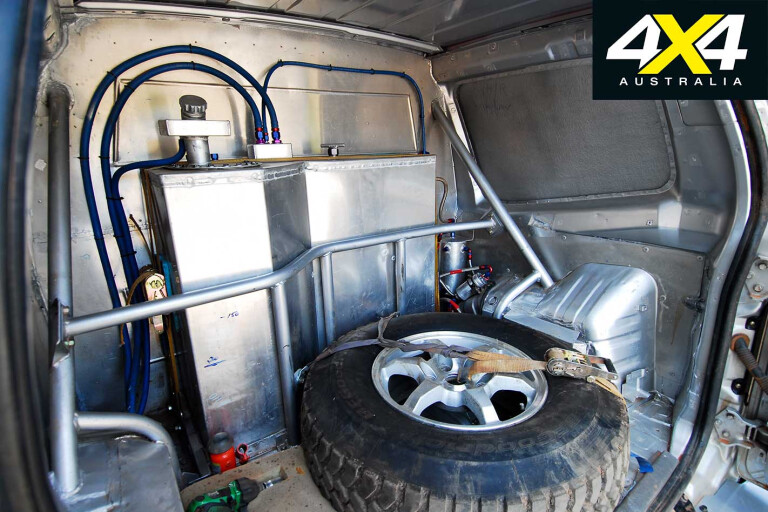
Inside the cabin is spartan. Two race seats and a full harness is as comfortable as it gets. There’s no instrumentation apart from oil pressure, fuel pressure and high-temperature gauges.
The navigator has a TerraTrip meter, with a foot operated reset switch. Headphones for communication between the driver and navigator are a necessity as the noise in the cabin under full acceleration is near deafening.
I was surprised to learn that the stripped-back Pajero weighs two tonnes. Steve had been chasing an 1800kg race car but that was denied him. “We can lose a bit of weight though – the roof, bonnet and all the doors are steel, so we’ll start there,” he says. His mates are going to have plenty of work ahead of them before the next Safari.
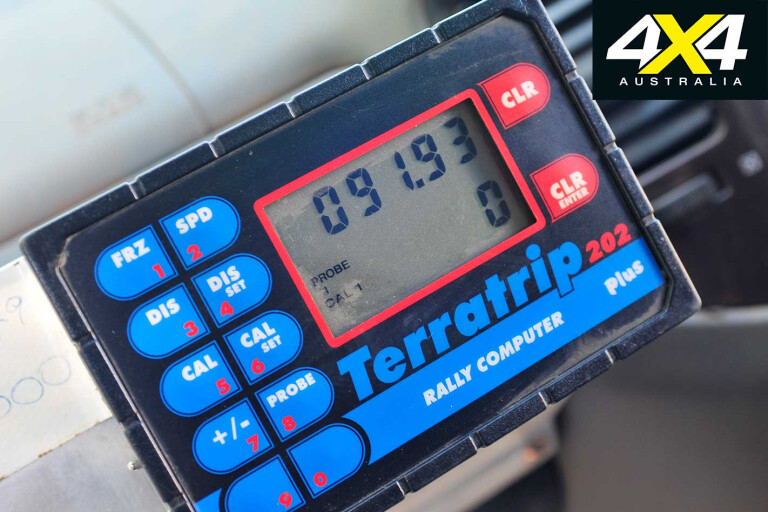
I took the Pajero for a short blast: the clutch is light; the throttle sensitive; the engine response from too heavy a right foot angry and brutal. The SWB Pajero is an absolute beast that needs a deft hand and smooth, controlled footwork to keep it in a straight line and under control.
Ooh, did I mention the steering mod? This is cool! A small extra gearbox in the steering column changes the steering response and now it is 1.5 times more direct than standard. I liked it once I got used to it, but I couldn’t help but think that around each and every corner it seemed the front and rear of the SWB Mitsubishi wanted to swap places. Maybe I’m getting too old for this sort of caper… or maybe this is simply way too much car for me.
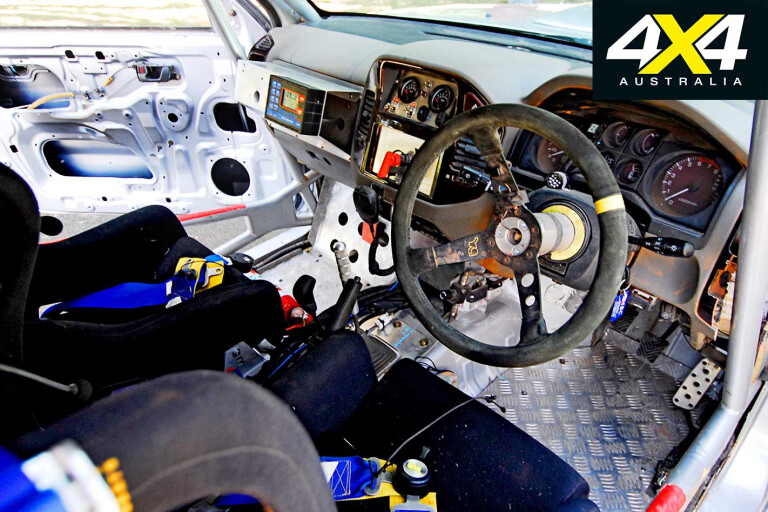
As I handed the Pajero back to Steve I was relieved that I hadn’t binned it into a tree or some other obstacle!
With a bit of luck, that’s the way it will stay. Steve has plans for the Pajero once there’s been a bit more time in the workshop. The Condo 750 this Easter will see its first big test before lining up for the next Australasian Safari in August in WA. I reckon Steve and the Pajero are odds-on for another win in 2009.
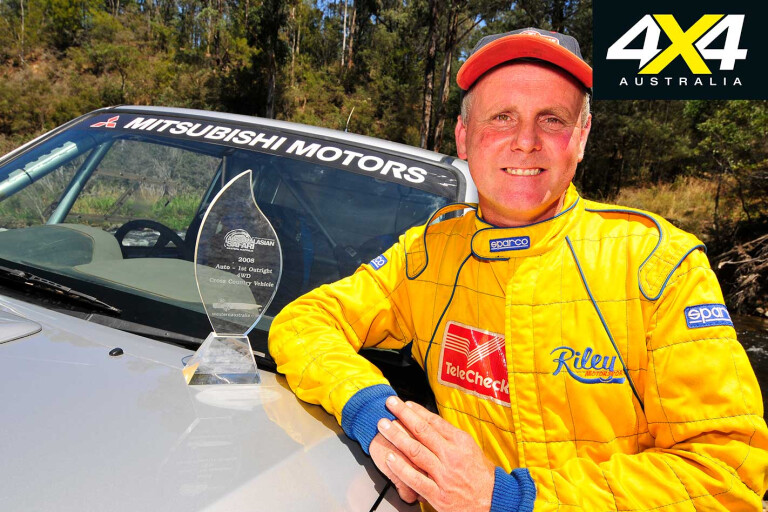
Holinger gearbox
Holinger Engineering, based in Croydon South, Victoria, provides speciality gearboxes to the world including Dodge Vipers, Nissan GTRs Trans-Am cars and a host more. The six-speed rear-wheel drive gearbox is available in H-pattern as well as sequential-shift for engines with up to 680Nm of torque, more than 880Nm of torque and for drag cars. The input shaft and fixed output flange are available in various configurations; weight is around 37kg; and there’s provision for connection to an external oil cooler if required.
There are Dog Change Conversion kits designed to fit into OE transmission cases that provide wider stronger gears, shorter faster gear shifts, as well as alternative ratios. They’re available for high performance cars such as the Mitsubishi Lancer EVO, Subaru Impreza WRXs, a number of Porsches and Lamborghinis, amongst others.
No wonder Steve Riley chose a Holinger box for his racing Pajero. For more information check out holinger.com.au.

COMMENTS